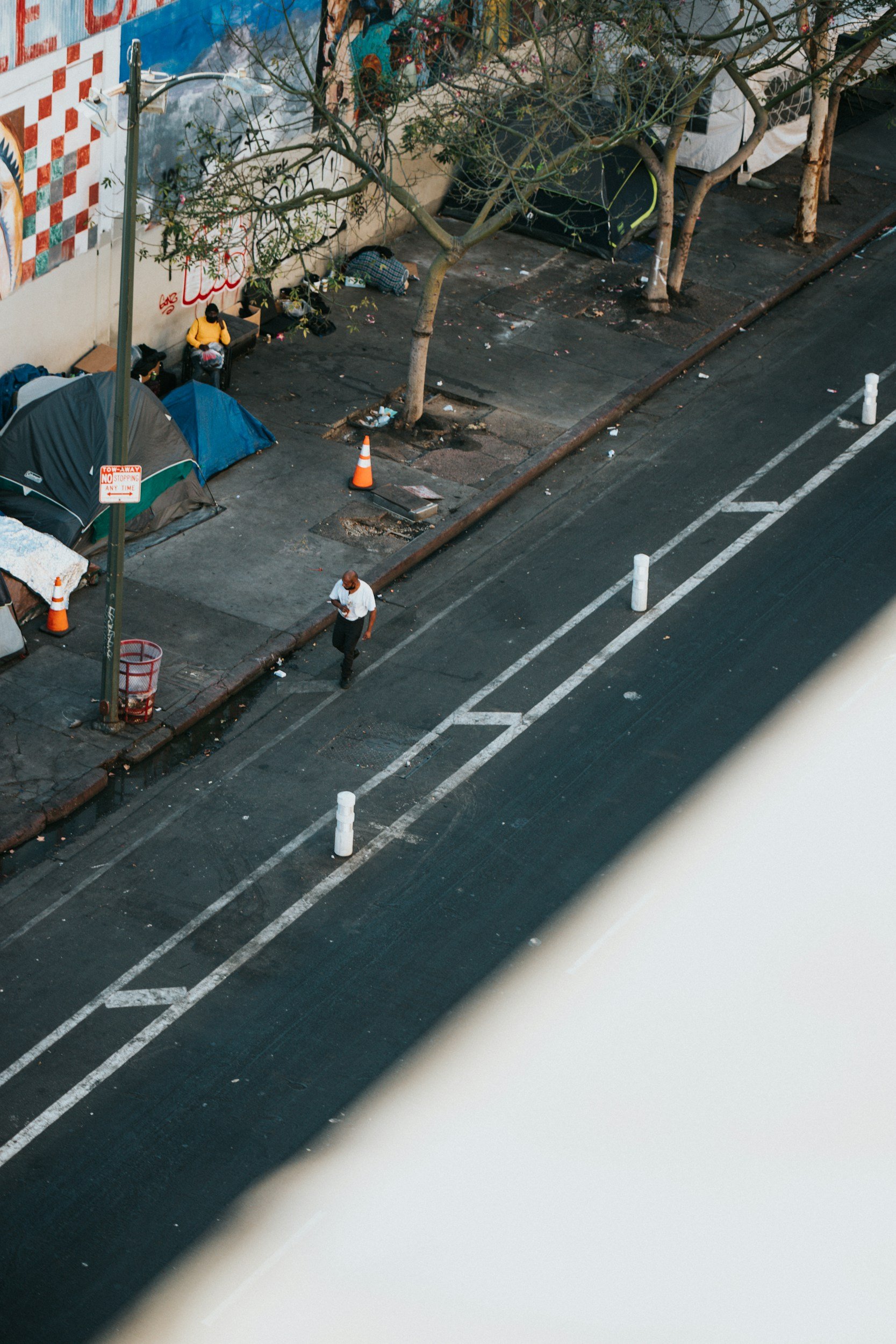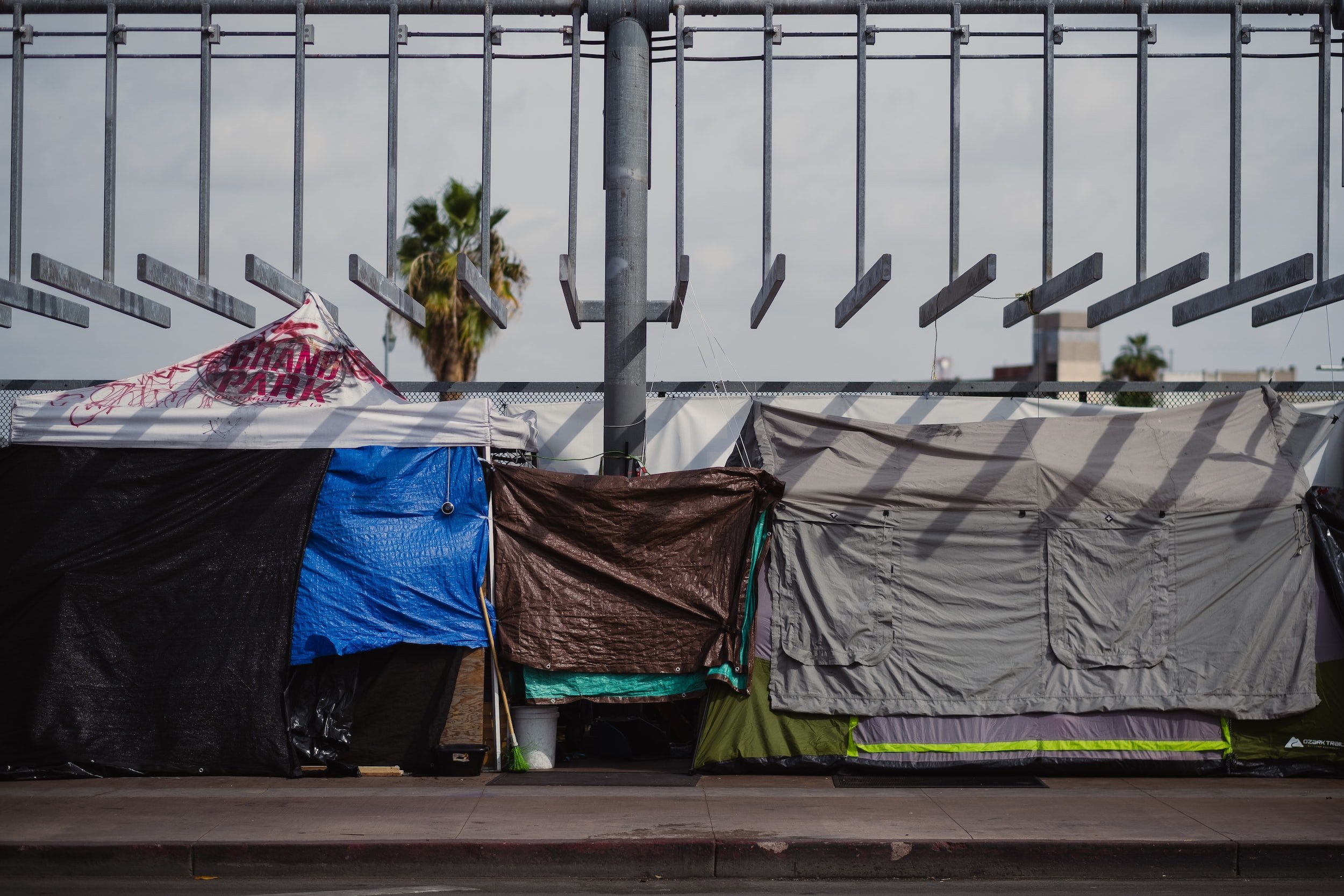
A Tale of Two Crises
At the onset of the COVID-19 pandemic, the situation of people experiencing homelessness and what communities could do to protect this vulnerable subpopulation emerged as an area of particular concern. People experiencing homelessness are both less likely to be able to self-isolate or quarantine and more likely to suffer a severe case of COVID-19 due to underlying health conditions. In addition, local mitigation efforts in response to the pandemic may have negative, unintended consequences for the population experiencing homelessness.

‘Anywhere but Here’
Homelessness is a pressing issue in many communities across the United States, with California often at the epicenter of the crisis. Despite numerous policy initiatives aimed at its alleviation, for six straight years, the problem has increased nationwide. Areas where we had seen improvement, such as veteran and family homelessness, are again on the rise. Meanwhile, racial disparities in homelessness are at an all-time high, with communities of color experiencing the phenomenon at three to four times the percentage of their overall representation in the population.

The Echoes of Echo Park
Despite continued growth in unsheltered homelessness during the COVID-19 pandemic, policymakers continue to implement and enforce quality-of-life ordinances that criminalize the everyday spatial practices of houseless people. These laws are enforced through police sweeps and target necessary life-sustaining tactics associated with one’s status as unhoused, including camping, loitering, panhandling, and cooking food on public sidewalks and in parks. Their material impacts can be illustrated by expanding anti-homeless strategies like the March 24, 2021 displacement of an autonomous encampment in Echo Park Lake, which resulted in the displacement of 193 individuals and demolition of a community kitchen, garden, and semi-permanent structures, as well as the February 14th, 2023 demolition of a woman’s do-it-yourself semi-permanent structure in Skid Row.

From Rejection to Legitimation
In April 2021, the City of Portland, Oregon legalized sanctioned, self-managed houseless encampments. It did so in a very pedestrian manner, by amending its land use ordinances that regulate houseless camping in order to make encampments amenable with the city code. This is a big deal! Currently, the regulatory responses by municipalities experiencing high numbers of unsheltered houselessness is quite varied.

What Does It Mean to Be Homeless?
Organizations and policymakers have recently brought the definition of homelessness to the forefront, including multiple reports by the Government Accountability Office, and the Homeless Children and Youth Act of 2021 which was introduced but not passed. Much of this debate stems from the U.S. Department of Housing and Urban Development (HUD) not including households living doubled-up – i.e., sharing housing due to economic hardship, loss of housing, or a similar reason – as homeless, contrary to many other definitions of homelessness.

No Right to Rest
In response to a persistently high number of people experiencing homelessness, concerns have grown among many local officials that the urban environment is being undermined by the presence of unsheltered homeless people, living in public places. An associated concern is that when homeless people are allowed to conduct acts of living in public spaces (such as sleeping or panhandling), they fall into unhealthy behavioral patterns that lengthen their spell of homelessness and undermine their long-term prospects.